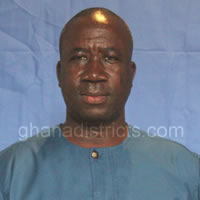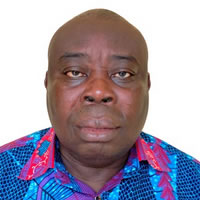Electricity Distribution
None of the four Area Councils have full coverage of Electricity. By December 2008 just about 40% of the total communities have access to electricity. There were plan to connect areas like Anumso, Freboye, Yapesa, Kokoben, Brofoyedru, Ampantubuom to the national grid at the next phase of the Self Help Electrification Project SHEP.
Marketing of Agricultural Produce
Marketing of produce in the District is mainly organised by middlemen. There is only one organised weekly market centre at Nsuta where mainly farm products from the area is marketed and manufactured goods from the cities are also sold. In most cases market women from Obuasi, Bewkai, Konongo and Kumasi moves round the villages to mobilise and cart lorry full of foodstuffs such as cassava, plantain, paddy rice and maize. Also vegetables such as cabbages are grown around the Lake Bosomtwe Basin on a large scale which attracts buyers from Kumasi, Konongo and Accra.
Apart from these, there are few daily markets in some of the communities which are organised a very smaller scale. This system of marketing applies to cash crops such as citrus, oil palm, except cocoa which is marketed through organised marketing companies stationed in strategic locations throughout the District.
Postal Services & Telecommunication Services
The District has no post office which offers normal Postal as well as Courier services. Inhabitants of the District rely on the Konongo, Bekwai, Obuasi and New Edubiase for their postal service need. There is no telephone exchange facilitie to support the services of Local Area Networking (LAN) or Cell Phone service provision.
In view of the positive role that Telecommunication Services offer to the economic development of the local economy, in the area of information dissemination, trade, Commerce, Private Sector participation in telecommunication delivery the District intends to liaise with service providers to extend their operations to the District. Another key communication facility which is lacking in the District is the internet. Private – individuals who wish to hook to the Net have to travel to Kumasi to access the facility.
Accessibility to Service
Surface Accessibility to Services
Surface Accessibility in the District can be described as very poor. Road density is very low which means that most of the roads which are mainly feeder roads are not connected. The inaccessible and deplorable nature of road network greatly affects production and distribution of goods and services in the District. This has been identified as a major cause of post harvest losses in the District.
Accessibility to Health Facilities
Accessibility to Health Facilities in the District is very limited. The District is served by only two functional health centres and three private clinics. There is an urgent need to upgrade the Asiwa Health Centre into District Hospital to serve the clinical and medical needs of the people. Because of the limited health facilities available, every disease which is considered serious is referred to District Hospitals in Bekwai, Obuasi and Konongo.
Markets
The District has only one market centre located at Nsuta. Apart from this there is virtually no markets in the District except some small daily markets at Asiwa, Anyanso, Freso and Korchikrom. This has greatly affected the Internally Revenue Generation capacity of the Assembly since communities in the rural areas such as Semdadieso, Ohwimase, Nsutem and Minti where foodstuffs are produced do not have marketing centres though they have expressed interest as a way of opening up the area and reducing post harvest losses.
More market structures would have to be put-up in these foodstuffs growing areas and the institutions of market days which could coincide with their taboo days.
Postal Services & Telecommunication Services
The District has no post office which offers normal Postal as well as Courier services. Inhabitants of the District rely on the Konongo, Bekwai, Obuasi and New Edubiase for their postal service need. There is no telephone exchange facilitie to support the services of Local Area Networking (LAN) or Cell Phone service provision.
In view of the positive role that Telecommunication Services offer to the economic development of the local economy, in the area of information dissemination, trade, Commerce, Private Sector participation in telecommunication delivery the District intends to liaise with service providers to extend their operations to the District. Another key communication facility which is lacking in the District is the internet. Private – individuals who wish to hook to the Net have to travel to Kumasi to access the facility.
Agriculture Extension Services
The important role that Agriculture Extension Officers play in the dissemination of information to farmers and the promotion of innovative ways of agricultural products cannot be over emphasized. The introduction of new hybrid materials to farmers, for increased production, Extension Services to improve Crop yield and technical advice offered to these farmers have contributed to increase in crop and food, diversification of the economy from the mono-crop farming and entering into non-traditional crops such as sunflower, vegetables which have ready market.
The problem inherent in this service is the non operationalisation of the District Agric Development Unit and inadequacy of Extension Services or Officers to assist the farmers in the District. Currently the Extension farmer ratio is 1:10,000 and the few available officers operates under the Bekwai Municipal Agric Development Unit which makes it difficult to offer efficient and effective Services. The few Officers stationed in the District also face the problem of inadequate logistics such as motor bikes to go for regular field inspection and visits. The need to increase the staff strength would therefore need to be considered.
District Police Service
Although crime is not prevalent in the District the level of security provision in the District is very low. There are only two Police Stations located at Asiwa and Nsuaem II which operate under the Bekwai Divisional and Municipal Police Command.
In view of the Urbanization of the Amansie East, the Police Command has raised the status of the Police activities in the District to a Divisional Headquarters. To make it more operational, the Assembly has provided office and residential accommodation to the Divisional Commander.
Some abandoned structures have also been identified for repairs to be converted to residential accommodation for the officers to be posted to the Division. Again, a new Police Station with facilities has been constructed at Asiwa. Repair works have been undertaken at the Bekwai Police Barracks to facelift the area.
Within the plan period, the Assembly would establish additional Police Stations at Morontuo, Nsuta and Tebeso II/Freso communities. The Assembly shall also pursue the upgrading of the Asiwa Police Station to a District Command.
Production and Marketing Centres
Production activities in the District are mainly agro based and undertaken in the rural areas where soils are conducive for food and cash crops production. Major cash crops grown are Cocoa, Oil Palm and Vegetables such as cabbage, garden eggs, tomatoes, at Adeito, Yapesa. Cereals such as rice and maize at Nsuaem, Anwiaso and Tebeso. Middlemen travel from far away Sekondi-Takoradi, Accra, Kumasi and Obuasi to these communities to purchase the foodstuffs and vegetables and send them to the urban centres. Sustained Cocoa High-tech Programme would also improve the cocoa production and increase the yield.
Education Accessibility
Basic Educational facilities are evenly distributed within the District. These include; 43 Pre-School, 53 Primary and 30 Junior Secondary School. At the Senior Secondary, Vocational and Technical level, there are only two schools, the Bosome Senior Secondary Technical School and an Intergrated Community Centre for Employable Skills (ICCES) located at Abosamso/Asamama. There is therefore the need to have additional Second Cycle Schools to absorb the basic school pupils who would complete from the Junior Secondary School level.
Commodity Flows
The flow of goods and services from the district to other parts of the country and back to the district is determined by resource availability and the needs of the population in the community.
As an Agricultural District, the major crops that are exported from the District to other parts of the country are plantain, cassava, rice and maize. Market women from Sekondi-Takoradi, Accra, obuasi and Kumasi come to these communities to purchase truck loads maize, rice, cassava, yam, cocoyam, plantain etc. and send them to the urban markets to sell.
Some market women in turn bring in manufactured goods such as clothes, aluminum-ware etc. Other items in the district markets are building materials and accessories.
Major flow of goods from the districts to other parts of the country is maize, rice, vegetable and charcoal. The map attached shows the commodity flows in the district.
HOUSING CONDITIONS
Introduction
The realization of the general wellbeing of individuals is greatly linked to the improved housing conditions, provision of safe water supply and sewerage, as well as living facilities. Housing information can enable Ghana’s planners and policy makers to formulate realistic and appropriate housing policies and design suitable programmes to meet the country’s housing needs to reduce health and other problems that are associated with housing, both adequate supply and quality.
The issues covered in this chapter include the stock of houses both occupied and unoccupied (dwelling units), ownership or occupancy status, types of occupied dwelling units and the main materials used for the construction of the houses. The number of occupied sleeping rooms, the main source of lighting, cooking fuel and cooking spaces used by households is also analyzed. This chapter also has information on sources of water for drinking and for other domestic purposes, type of toilet and bathing facilities for households and methods of solid and liquid waste disposal. The presence of these utilities and household facilities are essential for the survival and well-being of households. The analysis is based on occupied dwelling units only.
Housing Stock
The total housing stock in the Bosome Freho District is 10,930, representing 1.0 percent of the total housing stock in the region. Average household per house is 1.2, which is lower than the regional average of 2.0 and the national average of 1.6. Population per house in the District is 5.4 and it is lower than the regional (8.1) and the national (7.1) averages. The District has an average household size of 4.6 which is higher than the regional and the national averages of 4.1 and 4.4 respectively.
Type of Dwelling, Holding and Tenancy Arrangement
This section looks at the type of dwelling and tenancy arrangements in the Bosome Freho District.
Type of Dwelling
Table 8.2 shows that compound houses constitute 47.8 percent of the total dwelling units occupied by households in the district and this is followed by separate houses (45.8%), semi-detached houses (5.0%) and Flat/Apartments (3.1%). Makeshift dwelling units such as huts, tents, kiosks, containers and attachment to shops or offices and uncompleted buildings together constitute 3.4 percent of the total dwelling units.
Households headed by females are more likely to live in compound houses (51.5%) than households headed by males (45.8%). Again, 42.1 percent and 37.6 percent of male-headed households and female-headed households respectively occupy separate houses.
Holding and Tenancy Arrangement
Table 8.3 indicates that, out of 12,923 dwelling units, 70.5 percent are owner occupied, followed by dwelling units owned by relatives that are not household members (16.2%). Dwelling units that are privately owned constitute 10.3 percent and that of public/government ownership constitutes 1.2 percent. Only 0.6 percent of the dwelling units are purchased by mortgage (being purchased). About 2 percent of the dwelling units are owned by private and government employees. Table 8.3, further shows that 71.3 percent of households headed by males live in owner occupied dwelling units whiles it is69.0 percent for households headed by females.
Construction Materials
This section is on the main materials used for the construction of outer walls, roofing and floors of dwelling units in the Bosome Freho District.
Main Construction Materials for the Outer Walls
The main construction material used for the outer walls of dwelling units is mud bricks or earth (57.3%), followed by cement blocks or concrete (34.6%). This is contrary to that of the Region where cement blocks or concrete is the highest (42.0%), followed by mud bricks or earth (22.0%). Landcrete constitutes 3.5 percent. Wood, metal sheet/slate/asbestos, stone, burnt bricks, bamboo, palm leaf/thatch/raffia and others together constitute 4.6 percent.
Main Material for Roofing
The distribution of construction materials for roofing shows that metal sheets is the main material used for roofing constituting (91.0 percent). The other two main materials used for roofing are bamboo (3.3%) and thatch/palm leaves or raffia (2.3%). There are other roofing materials comprising of mud/mud bricks/ earth, wood, slate/asbestos and roofing tiles all accounting for 3.4 percent.
Main Construction Material for floor
Materials used for the floor of a house affect its general appearance, esthetic quality and affects the health status of the occupants. Some floors are easily contaminated and others are difficult to clean or disinfect. As shown in Table 8.6, the main construction materials used for the floors in the District are cement or concrete (73.0%), followed by earth or mud (23.1%). Floors made of tiles constitute only 1.9%, and smaller percentages are made with stone (1.4%), burnt bricks (0.1%) and wood (0.1%).
Room Occupancy
The number of sleeping rooms a household has provides an indication of the extent of crowding conditions in the rooms. More importantly, crowded living conditions may increase the risk of the spread of infectious diseases, such as tuberculosis and skin diseases. Table 8.7 indicates that, out of the total number of households, 47.3 percent occupies one sleeping room, 27.4 occupy two sleeping rooms, 11.8 occupy three sleeping rooms and the rest occupy four or more sleeping rooms. Of single-member households, 80.2 percent occupy one sleeping room, 9.7 percent occupy two sleeping rooms and 3.3 percent occupy three sleeping rooms.
With regards to two member households, 59.7 percent occupy one sleeping room, 28.3 percent occupy two sleeping room and 5.1 percent use three sleeping rooms. Concerning three member households, more than half (53.8 percent) occupy one sleeping room, 28.3 percent occupy two sleeping rooms and 9.3 percent occupy three sleeping rooms. With respect to households of ten members and above, more than a tenth (11.4 percent) occupy one sleeping room and a little more than a fifth occupy two sleeping rooms (20.1 percent) and three sleeping rooms (23.7 percent).
Access to Utilities and Households Facilities
Access to adequate and reliable utilities promotes general wellbeing of household members. This section looks at the sources of lighting, cooking space and fuel, sources of water for drinking and for other domestic uses, toilets and bathing facilities and disposal of households waste.
Main Source of Lighting
The main sources of lighting are electricity (mains and private generator), kerosene lamp, gas lamp, solar energy and candle. Figure 8.1 indicates the sources of lighting used by dwelling units in the district. The highest proportion of dwelling units use electricity (mains and private) as their main source of lighting (49.0%), followed by flash light/ torch, (34.3%) and kerosene lamp (15.7%). Gas lamp (0.2%), solar energy (0.3%), candle (0.3%), firewood (0.1%) and crop residue (0.1) together constitute 1.0 percent.
Main Source of Cooking Fuel
Table 8.8, indicates that, 4.0 percent of all the households do not cook while 78.8 percent use wood as the major source of fuel for cooking. This reflects the rural nature of the District. Also, sizeable proportions of households use charcoal (10.9%) and gas (5.2%) as their main source of cooking fuel. Electricity, kerosene, crop residue, animal waste and other sources all together constitute 1.1 percent.
The distribution of cooking spaces is presented in Table 8.9. Almost half of households (45.7%) have cooking spaces that is separate for their exclusive use. The proportion of households that cook in open space in the compound (12.6%) is almost the same as those that share separate rooms with other households (12.2%). Households that use the verandah as their cooking space constitutes almost a tenth (9.5 percent) and households that cook in a structure with roof but without walls accounts for 10.2 percent whiles those who cook in an enclosed place without roof is 2.9 percent.
Date Created : 11/25/2017 4:56:03 AM





